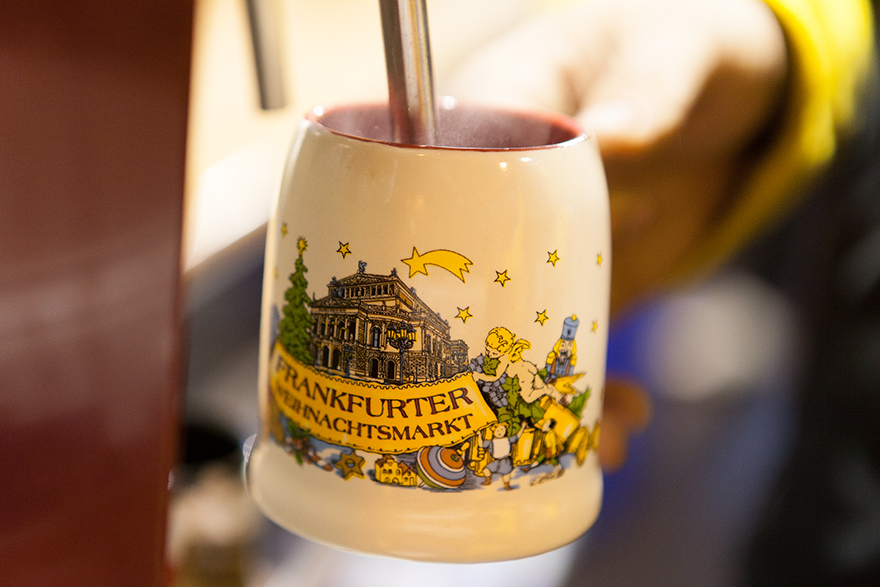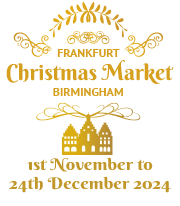Traditional Christmas Stollen
Stollen is a German Christmas cake which dates back to the Middle Ages. It was traditionally given by peasants to their feudal lord as a tax in kind.
The cake’s distinctive shape, which it retains to this day, originates from “the Infant Jesus wrapped in swaddling clothes”, who was venerated in Mediaeval Christianity. It is made from flour, butter, raisins, almonds, marzipan, candied peel, water, yeast, salt, spices and rum.
These Stollen are prepared from an old recipe belonging to a traditional bakery and are baked in cast-iron tins.
Stollen keeps well for several months. To serve, it should be cut into slices and offered with or without butter or cream. Stollen is Germany’s most traditional Christmas cake, and with a cup of coffee or tea, it is a delicious treat on a chilly Advent day.

Photo © Marina Shanti, licensed from shutterstock.com
The Glühwein Stall
The Glühwein stall is very traditional at German Christmas markets. Glühwein evolved from the idea that wine-drinking should be a pleasurable experience in the winter months as well as in summer. The flavour of a winter wine should be suited to the cold and spread a glow of warmth from within. So Glühwein came into being. It is prepared from red wine and various spices and sugar, heated gently, then cloves and cinnamon are added to give its distinctive flavour. The secret lies in the recipe and especially the proportions of the ingredients.
Today, Glühwein stalls are an essential feature of German Christmas Markets. It is here that people meet over a warming drink and enjoy the festive atmosphere.

